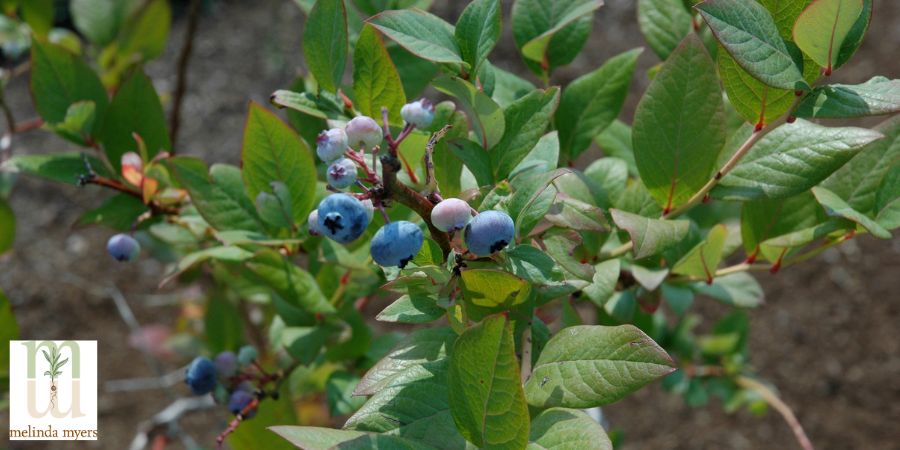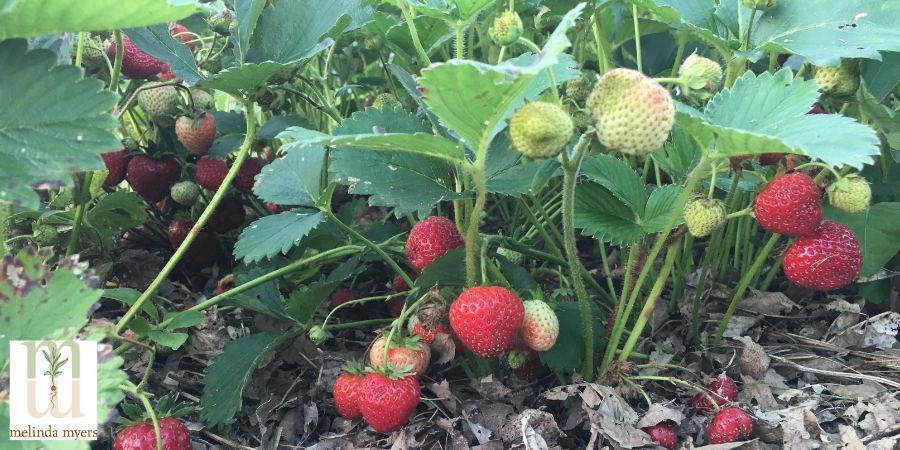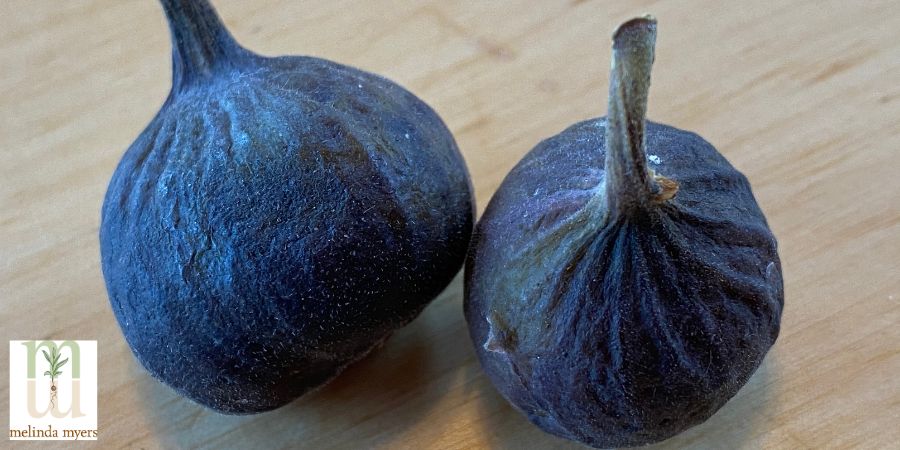How to Grow Berries, Figs, and Grapes at Home
- horticulturist and gardening expertMarch 30, 2024
Many of us are looking for ways to include fresh-from-the-garden flavor and nutrition in our meals by growing our own fruit. Fortunately, you do have quite a few options, even when space is limited.
The first step is to look for opportunities to add your favorite fruit plants to your landscape and the containers growing on your patio, deck, or balcony. Most fruit plants produce best when grown in full sun with moist, well-draining soil.
You don’t need space to plant an orchard or a traditional berry patch. Instead, look for ways to incorporate your favorite fruit plants into your landscape. Grow strawberries as ground covers throughout your yard. Use raspberries, blueberries, and blackberries as hedges. Vines like grapes can be trained on an arbor or pergola to provide shade, fruit, and privacy.

Blueberry bush
As you look for the perfect spot for your edible additions, don’t let the small plant you purchased in a pot at the garden center fool you. Those small plants often grow into much larger shrubs and vines. Check the tags and make sure there will be sufficient space for the plant to reach its mature size. Overcrowding results in poor fruiting, increases the risk of disease and means more work for you pruning the plant into a size that fits the space. Fortunately, there are now quite a few new compact varieties suited for growing in small spaces and containers.
A Few of the Easiest Fruit to Grow
Start with Strawberries
I recommend starting with strawberries. They are easy to grow, low in calories, high in vitamin C and antioxidants, and provide seasonal interest in gardens and containers. You’ll harvest an abundance of fruit from minimal space. Plus, the white flowers, tasty red berries, and beautiful fall colors will brighten up the landscape at your feet.
Even apartment dwellers and those with no in-ground planting space can grow strawberries in a pot or hanging basket on the balcony or deck. They'll be close at hand and easy to harvest. When I lived in the city, I always had a basket or two of strawberries hanging from the overhang of my balcony. The trailing runners provided a bit of privacy while allowing me to harvest strawberries to enjoy in my oatmeal or with a glass of wine.
Growing day-neutral or everbearing varieties means you will be harvesting several crops throughout the growing season. I have had great success growing the All-America Selections winning strawberry, DeLizz® strawberry. You can start it from seeds in early spring and enjoy several harvests the first year. It continues producing berries even as temperatures rise during the hot summer months.

Up the ornamental appeal of traditional in-ground plantings with a star-shaped bed. The elevated beds make for easier planting, weeding, and harvesting.
Tips for Growing Raspberries
Raspberries are another favorite fruit, and certainly one of mine. When gardening on a small city lot, I tried growing traditional raspberries in a huge pot on my back patio. It took up quite a bit of space and only rewarded me with a handful of berries. Fast-forward a few years, and Raspberry Shortcake was introduced. It is thornless and only grows 2 to 3 feet tall and wide, making it perfect for small spaces and containers.
These plants are hardy in zones 4 to 9 and need 800 chill hours. Chill hours are the number of hours when temperatures are below 45°F, which is what a plant needs to break dormancy, bloom, and set fruit. These temperatures do not need to occur consecutively; rather, it is a cumulative number over time. The University of Georgia Extension Service provides excellent resources and your local extension service may be able to tell you the average chill hours for your area.
The increase in interest in growing fruit, especially in smaller spaces, has resulted in more dwarf introductions from Bushel and Berry®. Baby Cakes Blackberry is another dwarf, thornless berry plant. It is a bit larger growing 3 to 4’ tall and wide. Baby Cakes produces large berries twice in most climates on the stems that grew the previous season. It is hardy in zones 4 to 8 and only needs 400 chill hours.
How to Grow Blueberries at Home
Blueberries are not only nutritious, providing a variety of health benefits, but they are also pretty plants. The white flowers, colorful fruit, and fall color make them a welcome addition to any outdoor space.
Use these as a decorative hedge in the landscape if your growing conditions are right for the plant. They prefer moist well-drained acidic soil and full sun. The lowbush blueberries are native to Eastern North America and produce delicious fruit. Highbush are cultivated blueberries yielding an earlier crop of larger less perishable fruit. Halfhighs are a cross between the two.
Gardeners in warmer regions need to grow Low Chill southern highbush varieties or the native Rabbiteye varieties of the southeastern U.S. Your local extension service, garden center, or online fruit retailer can help you find the best varieties for your location.
Blueberries are self-fertile, meaning you only need one plant to produce fruit, but you will have a bigger harvest if you grow two or more. Be patient, as it can take a couple of years for plants to produce an abundant harvest. You will need to protect these and most other fruit from hungry birds that are likely to stop by for a snack.
Even though I have more space where I live now, the soils are not the best for blueberries, so I opt to grow them in containers. Filling the container with a quality potting mix provides the slightly acidic, moist, well-draining foundation these blueberries need, increasing my growing success.
Dwarf varieties like those from Bushel and Berry® provide lots of options. Perpetua produces two crops while Midnight Cascade and Sapphire Cascade are suitable to grow in hanging baskets.
Select a container large enough to support the plant and one with drainage holes. Plant compact blueberries in a pot at least 12 to 16” in diameter and 10” deep. Raspberries and blackberries do best when grown in containers at least 16” in diameter and 12” deep.
Add Milorganite, a low nitrogen slow-release fertilizer, to the potting mix at planting to provide 6 to 8 weeks of nutrients. Make a second application at that time, if needed, but stop any fertilization by early August. Fertilizing late in the season encourages late-season growth that can be winter-killed.
Check soil moisture in containers and water thoroughly whenever the top few inches of soil start to dry. Elevate the pot above the saucer or deck to prevent it from sitting in excess water, which can lead to root rot. Elevating the pot above the deck, patio, or balcony surface also reduces the risk of staining to the surface below.
Those of us gardening in cold climates need to provide some added insulation for the roots over winter. I like to grow my plants in nursery pots, the ones trees and shrubs come in, and set these pots inside my decorative containers for the summer. You can usually find these pots at your local garden center for free if you don’t have a supply of your own. At the end of the growing season, I can lift the nursery pot out of the pretty container and bury it in a vacant part of the garden or store it with a bit of insulation in my unheated garage. Just be sure to water the plants stored in the garage any time the soil is thawed and dry.
Consider Growing a Fig in Your Landscape
Even those of us gardening in the north can enjoy the homegrown flavor of figs. The soft, chewy fruit contains potassium that helps control blood pressure, calcium to keep your bones strong, and Vitamin A that supports vision, fights aging, and helps with skin rejuvenation.

Fig
Consider growing a fig or two in your landscape. They make attractive container plants for the patio or balcony. Their large leaves add texture to the landscape and nothing beats harvesting fresh figs from your garden.
If you are lucky enough to garden in a mild climate that receives at least 100 chill hours you can enjoy two harvests, one in early summer and a second a few months later. Brown Turkey and Chicago Hardy cultivars have allowed even northern gardeners, like me, the opportunity to grow this sweet fruit. The plants die back to the ground in winter, eliminating the early summer crop, but still reward me with a late-season harvest.
Those of us growing figs in pots need to move them into an unheated garage or similar location for winter. Move them into winter storage as the days shorten, temperatures cool and leaves turn yellow but before the first killing frost.
How to Grow Grapes - Get Ready to Prune
Take your fruit gardening to a new level with vining plants like grapes. Train them onto an arbor for a decorative and edible entryway to the garden, on a trellis for screening, or over a pergola for shade. You will need a strong structure to support the plants and a willingness to do some vigorous pruning. These deciduous vines drop their leaves in winter, allowing warming sunshine through, while their leafy canopy provides welcome shade in summer.
Many gardeners like to train grapes on pergolas located over their outdoor dining area. They enjoy harvesting the fruit right where they can enjoy it. Unfortunately, others, like birds and squirrels, also enjoy the fruit and often leave a mess behind.
Once again, select varieties suited to your climate. Grapes prefer a long, warm growing season and anywhere from 100 to 2000 chill hours to break dormancy, blossom, and fruit. The University of Minnesota has developed quite a few zone 4 hardy grapes for northern growers and gardeners.
Grow grapes in a sunny location with moist, well-drained soil. Avoid areas near lawns, parks, or other spaces regularly treated with herbicides. Grape plants are especially sensitive to many of the weed killers used in these areas.
You can also try growing them in large, 15- to 20-gallon containers with drainage holes. The pot should measure at least 18 to 24” in diameter and 16 to 18 inches deep. When growing in colder climates, you will need to provide some insulation for the roots in winter. With such large containers, you may need to use bales of straw, bags of mulch, or woodchips to cover the pots for winter if left in place outdoors.
Pixie grape, a dwarf plant, was introduced in 2006, increasing grape growing opportunities for small space and container gardeners. These plants only grow a few feet tall, produce small 4” clusters of grapes, and are hardy to zone 5. The challenge will be finding a place to purchase the plants. The good news is this plant is being used for research, and hopefully, we will see more dwarf varieties introduced in the future.
Whether growing in the ground or a pot, proper pruning and training are key to maintaining the health, size, and productivity of grape vines. Fruit forms on new growth that sprouts from buds formed the previous season. Regular pruning directs growth into fruiting instead of producing huge, vigorous vines covered with leaves and little or no fruit.
This may explain the heavily pruned grape vines you have probably seen tethered to supports in local vineyards. Pruning is typically accomplished in late winter or early spring before growth begins. Do a bit of research to find the training system that best fits your landscape design, available space and pruning style. Most local extension services provide recommendations on grape varieties suited to your area and step-by-step pruning guides.
Adding fruit plants to your landscape or growing them in containers on your patio, deck, or balcony adds beauty and a bit of fun to your gardening experience. Start with a few plants and increase the number and variety of fruit grown as you gain experience and confidence.

